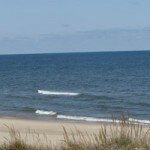PUBLIC CONSULTATIONS BEGIN ON BLOODVEIN LAND-MANAGEMENT PLAN
Manitoba Conservation advises the Bloodvein River First Nation's proposed Pimitotah Management Plan for its 3,482 square kilometre traditional land-use area is going to the public consultation stage. In December 2009, Bloodvein River's renewed interest in the Pimachiowin Aki World Heritage Project was announced. The project is a partnership of the Bloodvein River, Pauingassi, Little Grand Rapids, Poplar River and Pikangikum First Nations, and the governments of Ontario and Manitoba. Bloodvein River's plan outlines its vision of the protection and development activities to take place in its planning area. A section of Atikaki Provincial Park, which is covered by an existing management plan, falls within Bloodvein River's traditional territory. The proposed Pimitotah traditional-use planning area regulation describes the boundaries of the proposed area and the proposed management plan that would apply to it. In addition to establishing a permanent protected area, the plan proposes community-resource and commercial-development zones. A public meeting will ...




